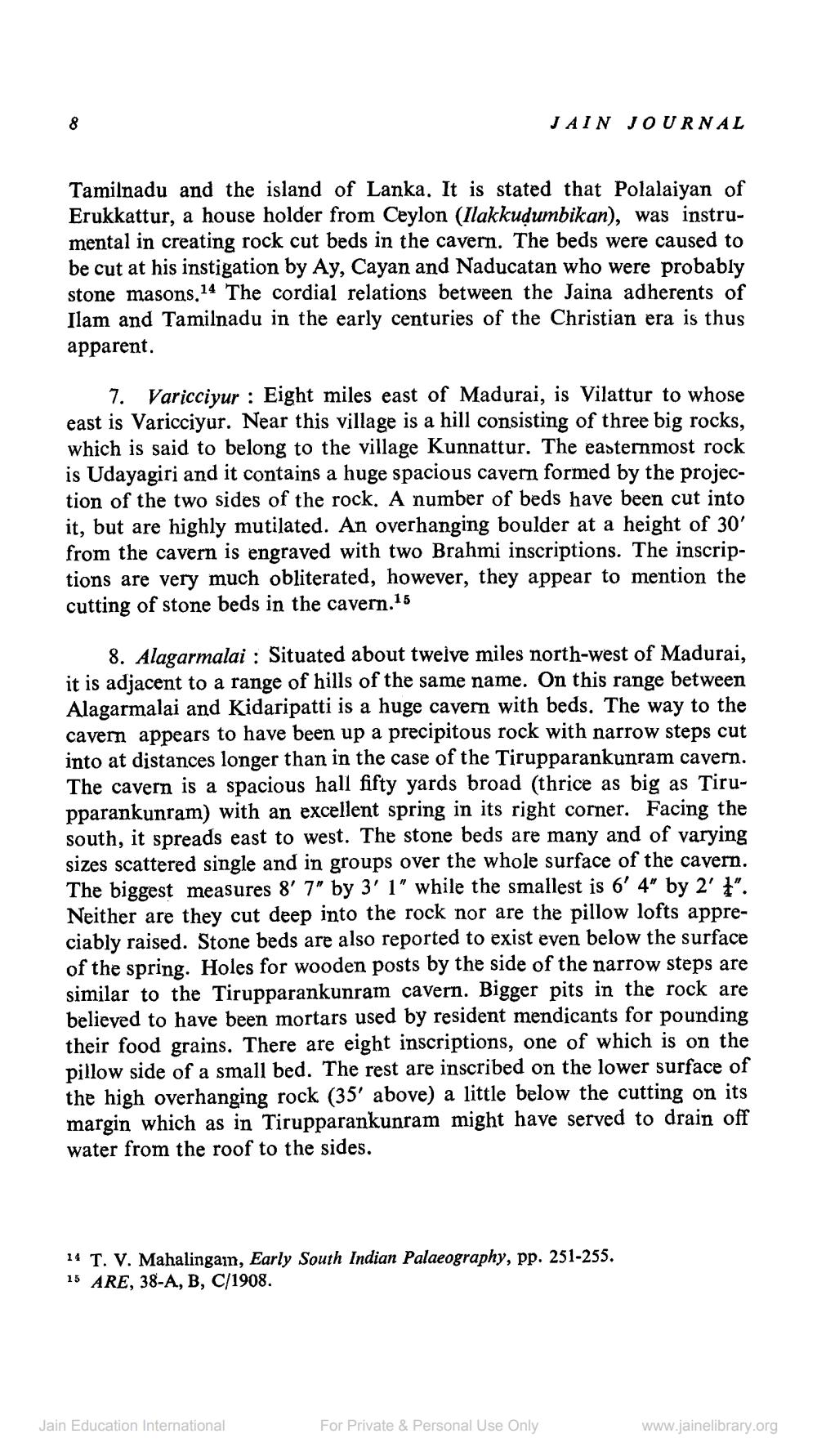Book Title: Jain Journal 1989 07 Author(s): Jain Bhawan Publication Publisher: Jain Bhawan Publication View full book textPage 9
________________ JAIN JOURNAL Tamilnadu and the island of Lanka. It is stated that Polalaiyan of Erukkattur, a house holder from Ceylon (Ilakkudumbikan), was instrumental in creating rock cut beds in the cavern. The beds were caused to be cut at his instigation by Ay, Cayan and Naducatan who were probably stone masons, 14 The cordial relations between the Jaina adherents of Ilam and Tamilnadu in the early centuries of the Christian era is thus apparent. 7. Varicciyur : Eight miles east of Madurai, is Vilattur to whose east is Varicciyur. Near this village is a hill consisting of three big rocks, which is said to belong to the village Kunnattur. The easternmost rock is Udayagiri and it contains a huge spacious cavern formed by the projection of the two sides of the rock. A number of beds have been cut into it, but are highly mutilated. An overhanging boulder at a height of 30' from the cavern is engraved with two Brahmi inscriptions. The inscriptions are very much obliterated, however, they appear to mention the cutting of stone beds in the cavern.15 8. Alagarmalai : Situated about twelve miles north-west of Madurai, it is adjacent to a range of hills of the same name. On this range between Alagarmalai and Kidaripatti is a huge cavern with beds. The way to the cavern appears to have been up a precipitous rock with narrow steps cut into at distances longer than in the case of the Tirupparankunram cavern. The cavern is a spacious hall fifty yards broad (thrice as big as Tirupparankunram) with an excellent spring in its right corner. Facing the south, it spreads east to west. The stone beds are many and of varying sizes scattered single and in groups over the whole surface of the cavern. The biggest measures 8' 7" by 3' 1" while the smallest is 6' 4" by 2' x'. Neither are they cut deep into the rock nor are the pillow lofts appreciably raised. Stone beds are also reported to exist even below the surface of the spring. Holes for wooden posts by the side of the narrow steps are similar to the Tirupparankunram cavern. Bigger pits in the rock are believed to have been mortars used by resident mendicants for pounding their food grains. There are eight inscriptions, one of which is on the pillow side of a small bed. The rest are inscribed on the lower surface of the high overhanging rock (35' above) a little below the cutting on its margin which as in Tirupparankunram might have served to drain off water from the roof to the sides. 14 T. V. Mahalingam, Early South Indian Palaeography, pp. 251-255. 15 ARE, 38-A, B, C/1908. Jain Education International For Private & Personal Use Only www.jainelibrary.orgPage Navigation
1 ... 7 8 9 10 11 12 13 14 15 16 17 18 19 20 21 22 23 24 25 26 27 28 29 30 31 32 33 34 35 36 37 38 39 40
